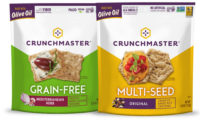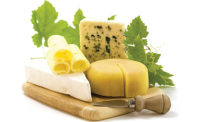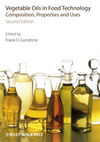Barry Callebaut’s Cocoa Production in West Africa
Cocoa producer aims to strike a balance between cocoa quality and sustainability

Photo courtesy of Barry Callebaut
This article originally appeared on DairyFoods.com.
Seventy percent. That’s the figure that kept running through my mind as I stared at the landscape outside the air-conditioned van.
That landscape lay in the Ashanti region of Ghana, which was where I found myself late last November, a guest of Zürich-based Barry Callebaut, one of the world’s largest cocoa producers. The company had invited more than a dozen journalists to this part of West Africa to impress upon us the challenges it faces as it tries to secure a stable, sustainable supply of quality cocoa for the world’s delectation.
Seventy percent of the global cocoa supply — there’s that figure again — comes from this and five other regions in Ghana and from the neighboring West African nations of Ivory Coast and Cameroon. Yet as I looked out that van window, what I saw looked more like a child’s fantasy of an African forest than an agricultural heartland: broad waxy leaves in every shade of green, creeping orchids and rutted roads that turn what should be a 45-minute drive into a three-hour ordeal. (Helpful hint: Get bathroom breaks outta the way before you board the bus.)
So how, I wondered, is the majority of the world’s cocoa grown here?
With no small degree of difficulty.
“In the biggest cocoa-producing region in the world — West Africa — poverty runs rampant, children still work on cocoa farms, climate change is negatively impacting agricultural regions and decreasing yields have pushed farmers into protected forests,” noted Seema Kedia, Barry Callebaut’s senior manager of marketing and sustainability.
But if your job is to supply cocoa — as Barry Callebaut’s is — there’s no getting around these challenges; you can only confront and hope to eliminate them. Which is why the company brought us to Ghana in the first place: to witness its attempts to bring cocoa production into the 21st century — and to keep it going for centuries to come.
Humble pie
The view from the van was just the beginning. Over the three days that my fellow reporters and I were “in country,” we observed scenes that were truly humbling — in several senses of the word.
For one, I was humbled by the pride and hospitality with which the Ankyiren community farmers in the Ashanti Bekwai district welcomed us onto their farms to let us try our hands at harvesting a few ripe cocoa pods. I still cringe when I think of the damage we greenhorns could have inflicted upon their trees; proper cocoa harvesting is a learned skill, and if you do it wrong you can mess things up royally. And I was more than happy to let the pros take over after I almost sliced off my right thumb with a small machete in an attempt to break open a cocoa pod. Cocoa farming: It’s not for sissies.
Yet the very fact that these farmers still harvest their cocoa with machetes — and sickles evocatively dubbed “go to hells” — is another humbling sign of just how much work Barry Callebaut faces in modernizing cocoa production. So, too, is the continued use of banana leaves as cocoa fermentation vessels, or open-air sun exposure as the medium for drying the beans.
I was humbled further when we visited the Bekwai District Depot, site of local cocoa purchasing, primary and secondary evacuations, grading and sealing. The depot is, effectively, a large storage shed stacked to the ceiling with 64-kilogram sacks of fermented and dried beans. Workers poke into bags with electronic moisture meters — among the few pieces of automated equipment I saw — to ensure moisture levels don’t creep above the 7.5% at which mold might grow. Meanwhile, representatives from the Quality Control Company of Ghana’s cocoa regulatory board, known as COCOBOD, count beans one-by-one to determine the number per 100 grams, hoping for counts of 90 to 95, as beans of that size yield more useful nib and less inedible shell.
The work all appeared to be done manually, as was the recording of the data collected. You’ll find no networked computer terminals waiting to share these quality measures with parties at other nodes in the cocoa supply chain in this depot. Instead, such crucial information still gets entered onto paper logs, their pages dog-eared and smudged.
Hope for change
But paper records might not be the standard for long, as Barry Callebaut recently partnered with the multinational software corporation SAP, Walldorf, Germany, to launch a cloud-based system for collecting and managing cacao traceability, sustainability and quality data.
Called “Katchilè” — a word from the Ivory Coast’s Baoulè language meaning “change” — the system lets farmers in even the remotest locations use their mobile devices to provide information about themselves, their farms, their beans and their communities to every level of the company’s supply chain.
A product of Barry Callebaut’s Cocoa Horizons program, which the company launched in 2015 with the goal “to improve the livelihoods of cocoa farmers and their communities through the promotion of sustainable, entrepreneurial farming, improved productivity and community development,” Katchilè is a tool that helps Barry Callebaut get to know its farmer partners and understand what their farms are like, Kedia said.
“With Katchilè, we are able to assess the impact of our farmer trainings by measuring the yield and other productivity metrics per farm over time,” she said.
The assessments can drill down to the farm level because the program uses GPS data to map the coordinates for each farm — a major advance in cocoa farming and a necessary one in places such as Ghana, where cocoa farmers don’t always know where their land ends and someone else’s begins.
Farmers showed us the app on their phones and demonstrated the intuitive way in which it functions. About a year and a half after the system’s mid-2016 launch, it continues its rollout in Ghana, Ivory Coast and Indonesia, “covering more and more farmers every day,” Kedia said. And like much of what Barry Callebaut is doing on the ground, it’s already making a difference in farmers’ lives.
Continue reading at DairyFoods.com.
Looking for a reprint of this article?
From high-res PDFs to custom plaques, order your copy today!








